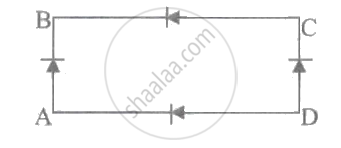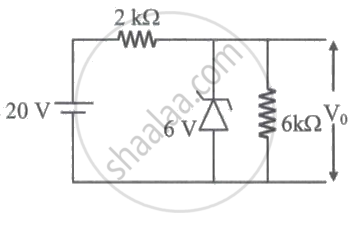Advertisements
Advertisements
Question
State the advantages of a full-wave rectifier.
Solution
Advantages of full-wave rectifier:
- Rectification takes place in both the cycles of the AC input.
- The efficiency of a full-wave rectifier is higher than that of a half-wave rectifier.
- The ripple in a full-wave rectifier is less than that in a half-wave rectifier.
APPEARS IN
RELATED QUESTIONS
Draw the circuit diagram of a half-wave rectifier. Explain its working. What is the frequency of ripple in its output?
Draw a neat diagram of a full-wave rectifier and explain it’s working.
Draw the circuit diagram of a half-wave rectifier. Hence explain its working.
The electrical resistance of depletion layer is large because ____________.
A junction diode of internal resistance 20 Ω is used for half-wave rectification. If the applied voltage has a peak value of 50 V and load resistance is 800 Ω, then d.c. value of current is ____________.
The maximum efficiency of full-wave rectifier is ____________.
In figure, the input is across the terminals A and C and the output is across B and D. Then, the output is ____________.

What is the value of output voltage V0 in the given circuit?

What is a rectifier?
If a centre tap transformer is used with 2 diodes for full-wave rectification, then output voltage of rectifier w.r.t. each diode is ______.
With a neat circuit diagram, explain the working of a full-wave rectifier. Draw the input and output voltage waveforms.
What is the ripple factor?
If the frequency of the input voltage 50 Hz is applied to a full wave rectifier, what will be the output frequency?
What is a ripple?
A photodiode is used in ______.
Write a short note on Full wave rectifier.
